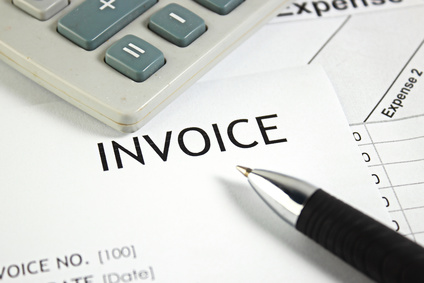 All businesses need to provide an invoice whether that is a till receipt, a handwritten one from a duplicate book, your own template using Word or Excel, or a bespoke invoice from your accounts software.
All businesses need to provide an invoice whether that is a till receipt, a handwritten one from a duplicate book, your own template using Word or Excel, or a bespoke invoice from your accounts software.
If you deal with lots of suppliers you will receive a variety of invoice formats. How many of these give you the basic information you need clearly? So when comparing confusing and straightforward invoices from your suppliers with your own company's invoices which category do your invoices fall into?
Invoices need to show some basic information but so often the information is hard to find. So what basic information is really necessary?
Your details - so many invoices do not show who provided them. There is no name and no address. This makes life very difficult for a bookkeeper or anybody trying to keep their accounts organised. Make sure your invoices at least have your name and ideally your address too especially if you are VAT registered.
Your customer's details - at a minimum it should have the name of the customer so you know who you have provided the invoice to and so that the customer knows it is their invoice and doesn't belong to someone else. It should have the customer's address if you are VAT registered.
The date - every invoice should have a date on it. If there isn't a date there is no clue as to when it was sent, when it should be recorded in the accounts and definitely no clue as to when it should be paid by. A VAT registered business must have a date on their invoice which is referred to as the tax date.
A unique number - each invoice should have a unique number so that it can be tracked and not confused with an invoice for another customer. If you need to amend an invoice, credit the original and create a new invoice with a new number because if you provide a customer two invoices with the same number but different amounts it will confuse them and confuse your records even more.
Detail - your invoice should show clearly what you are invoicing for.
Amount - the amount due should be written clearly so that your customer is in no doubt how much is due. If several amounts are recorded ensure these are totalled correctly at the bottom.
VAT - If you are VAT registered you must show the net amount due, the VAT amount due and the total amount due as three separate figures. You must also ensure your VAT number is included on the invoice.
Payment terms - unless you take immediate payment your payment terms should be included on your invoice. You should also include your accepted methods of payment.
The invoice you produce is your record of the sales you have made and is used in your accounts both for recording your income and ensuring you have received payment (and the right amount) from your customer. That invoice is also used by your customer in their accounts to record as part of their purchases and as a record of outstanding payments to make. So it is important that it is prepared well both for your own benefit as well as your customer's benefit.
A presentable accurate invoice sent to the correct contact promptly is an indication of a company with efficient processes and organised accounts. Following up if your invoice hasn't been paid within your payments terms is also important, firstly to ensure the customer does have the invoice and also to remind them that you do need paying.
Don't be one of those businesses who send their invoices weeks after the work was completed - it makes you look disorganised and like you don't need the money.
